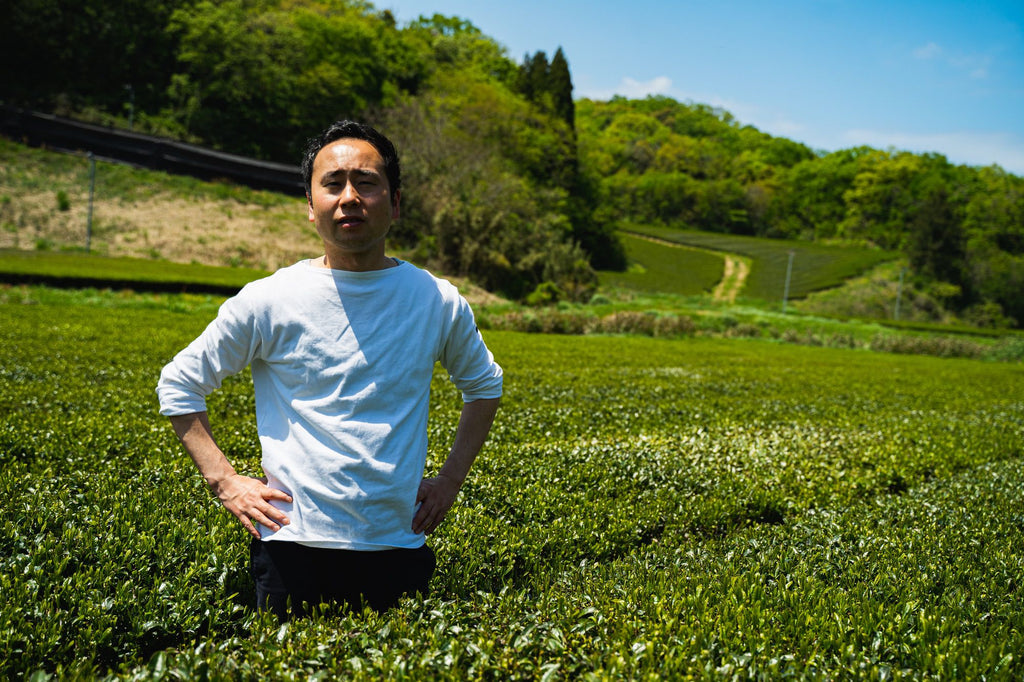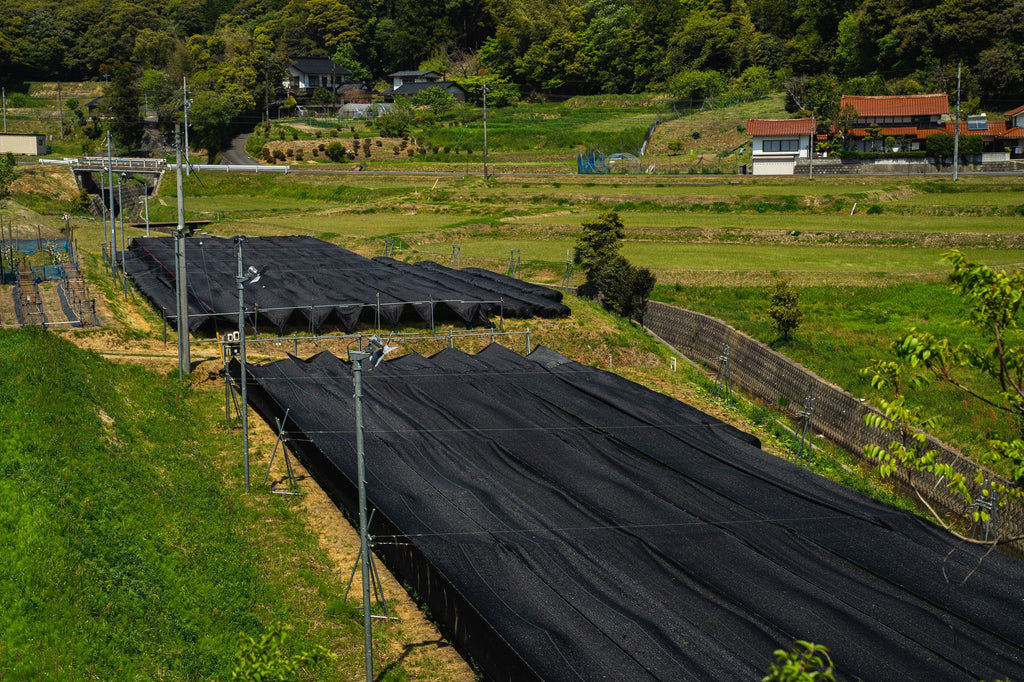When you hear the word "tea producing area" in Japan, few people think of Shimane Prefecture. We were astonished to learn that there are people in Shimane who produce such delicious tea.
If we had to describe their tea in one word, it would be 'Umami.' The sweetness and umami that spreads across the tongue and the unconventional aroma are different from any other tea production area. The tea has a soft and tender taste.
This time, we visited Izumo Tea Factory, which produces tea in Izumo City, Shimane Prefecture.
A 12ha tea farm in Izumo City, Shimane Prefecture. Produced by a farmer TV industry worker.

Facing the Sea of Japan and the Chugoku Mountains to the south, the San'in region is often covered with snow. The annual daylight hours are about 300 hours shorter than in Kagoshima, and although tea can be grown in this area, it is not suitable.
Izumo Seicha produces tea in a vast area of 12ha.
A 12ha plot of land is the equivalent of 2.5 Tokyo Domes. This is the most significant production scale in Shimane Prefecture. There are only a few tea growers that we know of that grow tea on this scale, and since the average cultivated area per tea grower in Japan is 2.7 square meters, it is easy to see how large the tea fields are.
The leader of Izumo Seicha is a young producer, Yuta Oka, who is only 34 years old. (As of 2021)

After working in Tokyo for a few years as a TV producer, he returned to Izumo and started working in tea production.
Be wise, Be stoic. Take the time and effort to make delicious tea.

In fact, we had met Yuta once in Tokyo before we visited Izumo. Our impression at that time was that he was very knowledgeable about tea production and management.
"This year's climate is quite similar to that of 2010, so I'm sure it will be delicious."
"We use a machine that measures chlorophyll to determine the appropriate period to cover."
His approach to tea production can be seen in the fact that he takes data on the weather and the growth of the tea leaves every year to ensure reproducible tea production, rather than just using his experience and senses.

"If we don't leave data, we won't be able to leave anything for the young generation."
We can't tell you how important it is to have a mindset like his in the tea industry, which is inextricably linked to the issue of successors.
Perhaps it is because of his experience working outside the tea industry, but we were impressed to learn that he is both a producer and a successful businessman.
However, when we visited his tea farm and factory in Izumo, we realized that our image of him as an intelligent businessman was slightly wrong.
His tea production was not only innovative but also stoic and uncompromising to produce delicious tea.
Where does the umami come from? The rich umami created by the covering.

This is a field that is just being covered. The rows are covered with black netting, which blocks the sunlight for a week or two.
There are two primary purposes of covering the field. The first is to prevent theanine (the flavor component) from changing to catechin (astringent ingredient) by blocking the sunlight and adding flavor to the tea leaves. The other is to increase the chlorophyll content in the tea leaves by allowing them to photosynthesize with less sunlight, resulting in a dark green color.

Tea leaves about a week after being covered. The color is darker and more vivid than regular shoots.
This technique is used to produce high-quality teas with a strong flavor, such as Gyokuro and Tencha (the raw material for Matcha). Even regular Sencha is sometimes covered to control the flavor and color.
In fact, this process is very time-consuming.
Heavy nets for shading are placed over the tea fields and monitored daily to determine the appropriate length of time to cover, and then the nets must be collected again before picking. The nets used for many years gradually become loose, so some growers repair them by hand.
Each row is about 50 meters long, and 100 rows make up one hectare.
When we heard that they cover as numerous as 8ha of fields, we were taken aback by the tremendous work involved.
Without the slightest compromise. Care to the covering

Izumo Tea Factory's covering is astonishing not only in its scale but also in its labor.
The green arches are placed along the rows, and the plastic is placed on top of them.
In standard fields, the nets are often placed directly over the plants, which is naturally less labor-intensive.
However, if the netting touches the tea leaves, it can cause the leaves to become hardened, the buds do not grow as straight as they should, and the scent of the plastic to be transferred to the leaves.
To prevent this, it is necessary to make shelves or place arches, as shown in the photo above, so that the net does not directly touch the tea leaves.
Izumo Tea Factory used to be grown directly covered in the past, but after Yuta's generation, all the tea was grown in arches.
This is a lot of time and effort on this scale. How is the flavor of Izumo Seicha tea produced? We was able to catch a glimpse of it.
Gentle and deep flavor
“Would you like some tea?”
After showing us the fields, we were given a very open invitation by Yuta to have tea made from the fields we had been looking at.
【茶葉の写真】
As mentioned at the beginning of this article, Izumo Tea Factory's teas have rich umami.
Izumo Tea Factory produces many cultivars of tea that have no odd aroma, such as Yabukita, Okumidori, Saemidori, and Sakimidori.
In the San-in region, where the weather is freezing, the varieties that can be grown are limited to high cold tolerance. As a result, to maximize the expression of each variety's individuality in this environment, they have arrived at the current style.
【お茶の写真】
The "Izumo Tea [Kiwami]" that we enjoyed today is the highest quality sencha made by combining Saemidori, Yabukita, and Okumidori. It has a soft and oozy texture, and the flavor and sweetness of the tea spread gently. It has a mild taste with slight bitterness and no bitterness, and its aroma is not peculiar, making it a genuinely premium tea.
For the past ten years, the trend in the market has been for deep steaming teas with less bitterness and darker color, but Izumo Tea Factory has added one more vital point: umami.
"I think that's the only way for a weak region to do it. It's more like originality."
As Yuta says, this tea is an exquisite tea that can only be tested at Izumo Tea Factory.
What's behind the deliciousness.

"If you want to make something good, you have to put in a lot of work."
That's what Yuta said to us as we walked through the fields together.
When we see these vast fields and the enormous amount of time and effort that goes into them, it is easy to see that these words come from deep within him.
Farming, especially tea farming, is a very labor-intensive job: cultivation, processing, distribution. There are so many things to think about, and Yuta was appointed as the representative last year. Even though he must be swamped, Yuta's words give us a sense of his strength to face tea straight and uncompromisingly.
Because of his unique career as a TV producer, he understands firsthand how difficult it is to make things. He travels around the country on his own to conduct sales and repeats trial and error while facing the tea fields every day.

On this day, the sun was shining so brightly that we could not help but take off our jackets. The first tea leaves of Izumo Tea Factory grow more slowly than those of other tea production areas, and they are still small and cute, just starting to bud.
We're sure this year's tea will be better than last year's, and next years will be even better than this year's. Listening to his words, I can't help but think so. We are delighted to have met such a trustworthy producer.

